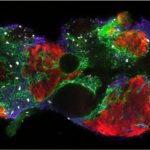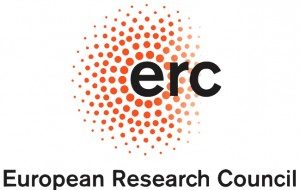Laure Bally-Cuif, head of the unit “Zebrafish Neurogenetics” was awarded a European Research Council (ERC) Synergy grant for the project ‘PEPS – Perpetuating stemness: From single-cell analysis to mechanistic spatio-temporal models of neural stem cell dynamics’. The project will be conducted in collaboration with three German teams led by Ana Martin-Villalba (Division of Molecular Neurobiology – German Cancer Research Center (DKFZ), Heidelberg), Anna Marciniak-Czochra (‘Applied Analysis and Modelling in Biosciences’ group, Institute of Applied Mathematics, Heidelberg) and Simon Anders (‘Bioinformatics tools for omics data’ group, BioQuant, Heidelberg). Laure Bally-Cuif is among the 105 researchers in Europe (and 22 in France) to receive this prestigious and highly selective grant in 2022, the ERC supporting 29 projects this year.
The consortium, gathering expertise in stem cell biology, bioinformatics and applied mathematics, will focus on the adult brain to understand how neural stem cells guarantee its long-term function by constantly generating new neurons necessary for its plasticity and repair. How is it possible to reconcile decisions taken at the single cell level (such as the start of the differentiation process) and at the population level (maintaining the overall equilibrium of a heterogeneous tissue composed of different cell types)? The project will aim to decipher the spatio-temporal interactions that govern such complex processes. Studying two different model organisms – the mouse and the zebrafish – it will bridge the gap between individual stem cell behaviors, short-range interactions influencing those behaviors and systemic properties at the population level. This will help understand how the ability of the brain to generate new functional neurons through stem cell differentiation when and where needed is perpetuated over time and space.



